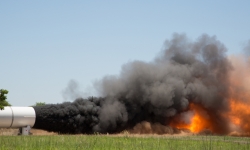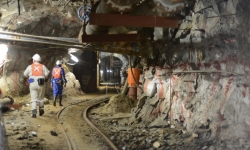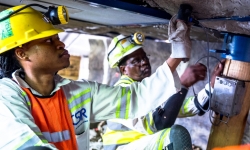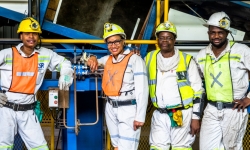Mining and mineral resources
Mining is a major driver of South Africa’s economic engine, accounting for 6% of the country’s gross domestic product. The sector provides jobs for nearly half a million people directly and another six million indirectly. A host of successful research initiatives, spearheaded at first by the Chamber of Mines and in more recent times by the CSIR, has helped the mining industry make significant strides in improving health and safety and efficiencies in mining.
However, as South Africa’s most profitable orebodies have been exploited, the remaining resources have become harder to access and extract. The technical challenges to mine have become even more severe, compounded by economic constraints and the increasing cost of labour. The lack of development and implementation of new technologies necessitate a shift in mining philosophies to ensure the longevity of the industry in South Africa.
Guided by the outcomes of the Mining Phakisa, the Mining Precinct was established at the historical home of mining research at the CSIR’s Carlow Road facility. Through the South African Mining, Extraction, Research, Development and Innovation (SAMERDI) strategy, the CSIR is poised to drive mining industry research and innovation into the future. The guiding vision is the modernisation of mining, which is expressed in the SAMERDI collaborative research programme. The framework of SAMERDI is a matrix of thematic areas and research initiatives.
Mining research and development thematic areas
- Current mining operation – To increase the efficiency of extraction and improvement in occupational health and safety and reduction in costs
- Mechanised mining – To develop fully mechanised mining systems that will allow for the drilling of narrow hard rock mines
- Non-explosive rock breaking – To develop extraction mining systems completely independent of the use of explosives
The thematic areas illustrate the natural course that research in these areas will follow. Firstly, a thorough understanding of current mining operations is necessary. By facing the ongoing challenges of high-stress mining, the industry itself is generating data that can be analysed to better understand rock mass behaviour under extreme conditions. Looking forward, the ‘drill-and-blast’ philosophy of the past and present is replaced by a continuous mining cycle. This will necessitate the implementation of non-explosive rock breaking techniques and the adoption of a mechanised mining philosophy. Both these areas pose profound research questions, such as:
- How will the rock mass’ response to continuous mining differ from that of current, cyclical mining?
- What mining techniques will minimise the rock mass response?
- What technologies will find application in our unique, high-strength rock mass?
- What are the cost implications of initiating and implementing these technologies?
To fully implement continuous and mechanised mining approaches, it will be necessary to revolutionise the way in which humans, machines and the rock mass itself interact. The thematic areas below are part of that revolution.
Advanced orebody information
Geophysical techniques give us a picture of the composition of the rock mass around mining excavations. This picture tells us where the reef is and where potentially dangerous geological features may lurk. This knowledge allows planners and engineers to avoid or manage the dangers while ensuring that waste mining is minimised and extraction is optimised. These techniques include borehole radar, electrical resistivity tomography and ground-penetrating radar, among many others. This research theme focuses on developing the geophysical hardware and improving the analysis of results so that they can be implemented anywhere as part of the mine cycle.
Real-time information management
In any process-driven industry, particularly in mining, information is a resource that guides the decision-making process. Movement of the rock mass, seismic vibrations and other metrics, such as temperature and mechanical properties, can all indicate increasing hazard. Instruments and systems are developed to sense and integrate these measurements. Understanding how to interpret the data provided by these sensors is also vital. The points at which warnings are triggered for the various metrics that will be collected must be carefully calibrated to prevent false alarms and to ensure that no worker is exposed to undue risks.
Human factors
Modernisation via automation and mechanisation of mining processes will have significant implications on the number of people employed in the industry, as well as the required skills level. The requirements for the upstream and downstream processes associated with mechanisation will have to be understood. The goal of the project is to be able to develop a set of guidelines that will assist with new technology implementation at mines. A blueprint for the organisational structure of mechanised mines will be developed and linked to the data and information flow, as well as the mining value chain. A further goal is to identify skills and job profile requirements for mechanised environments, to be used as guidance to providers of skills development, as well as to national skills development initiatives.





